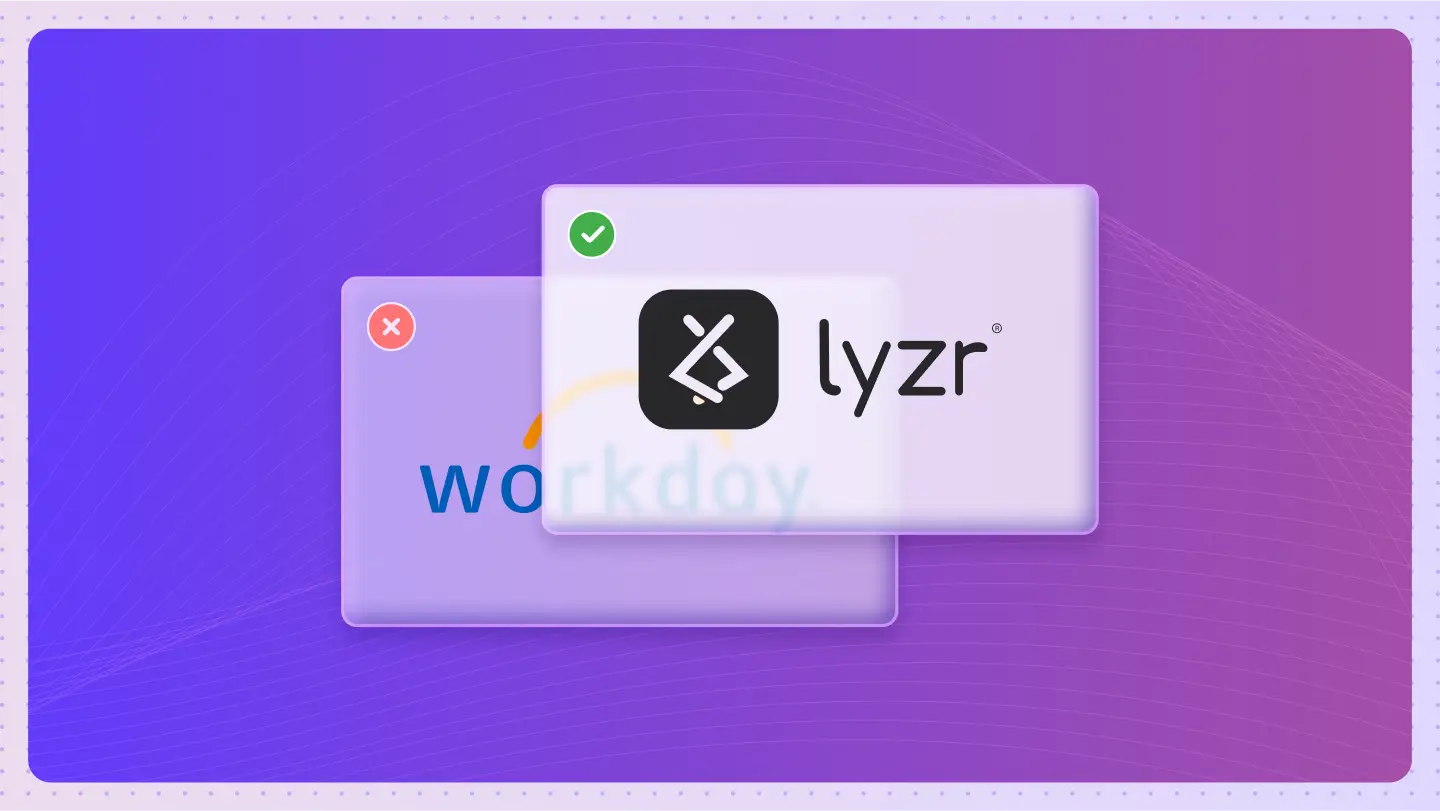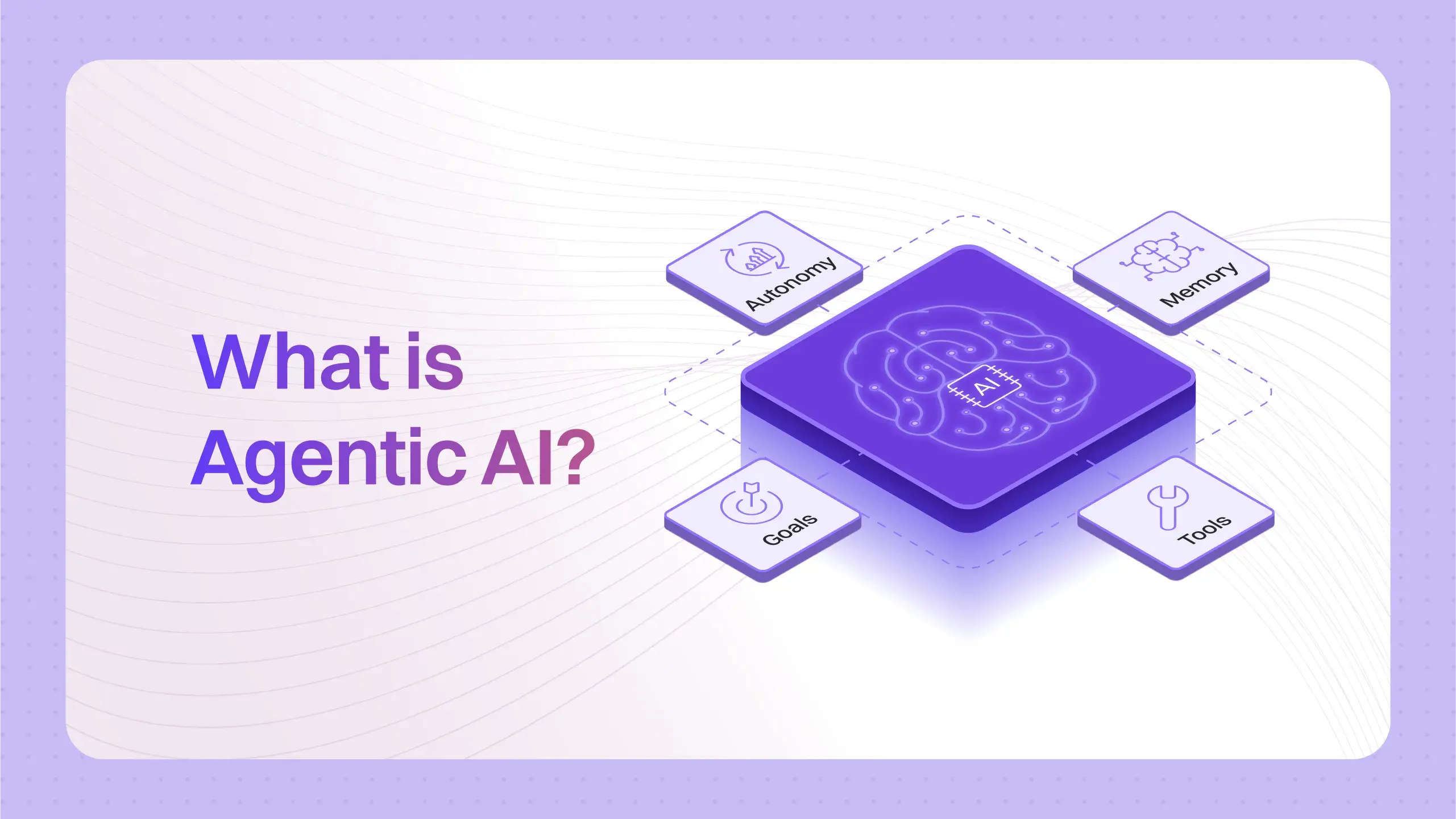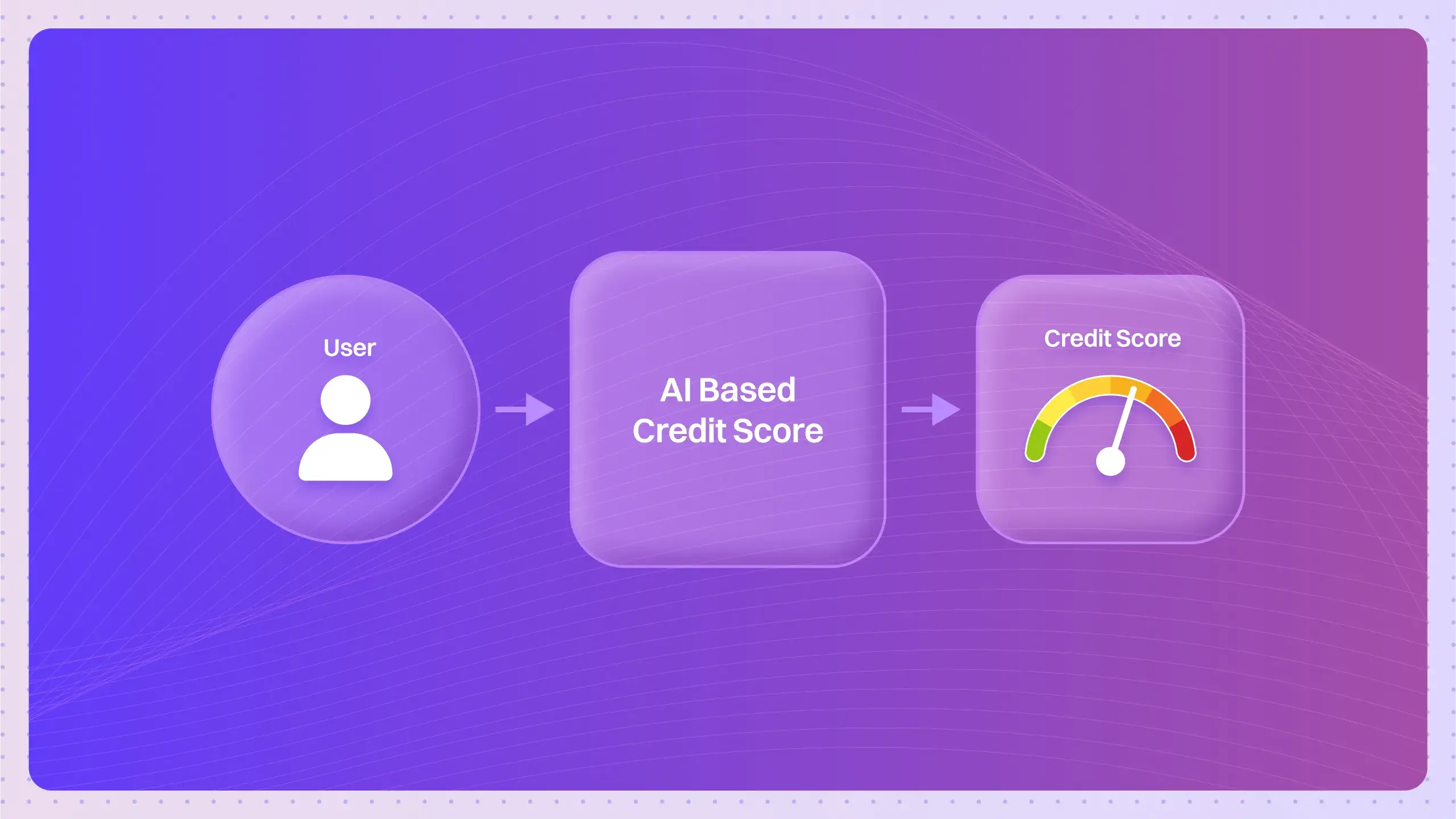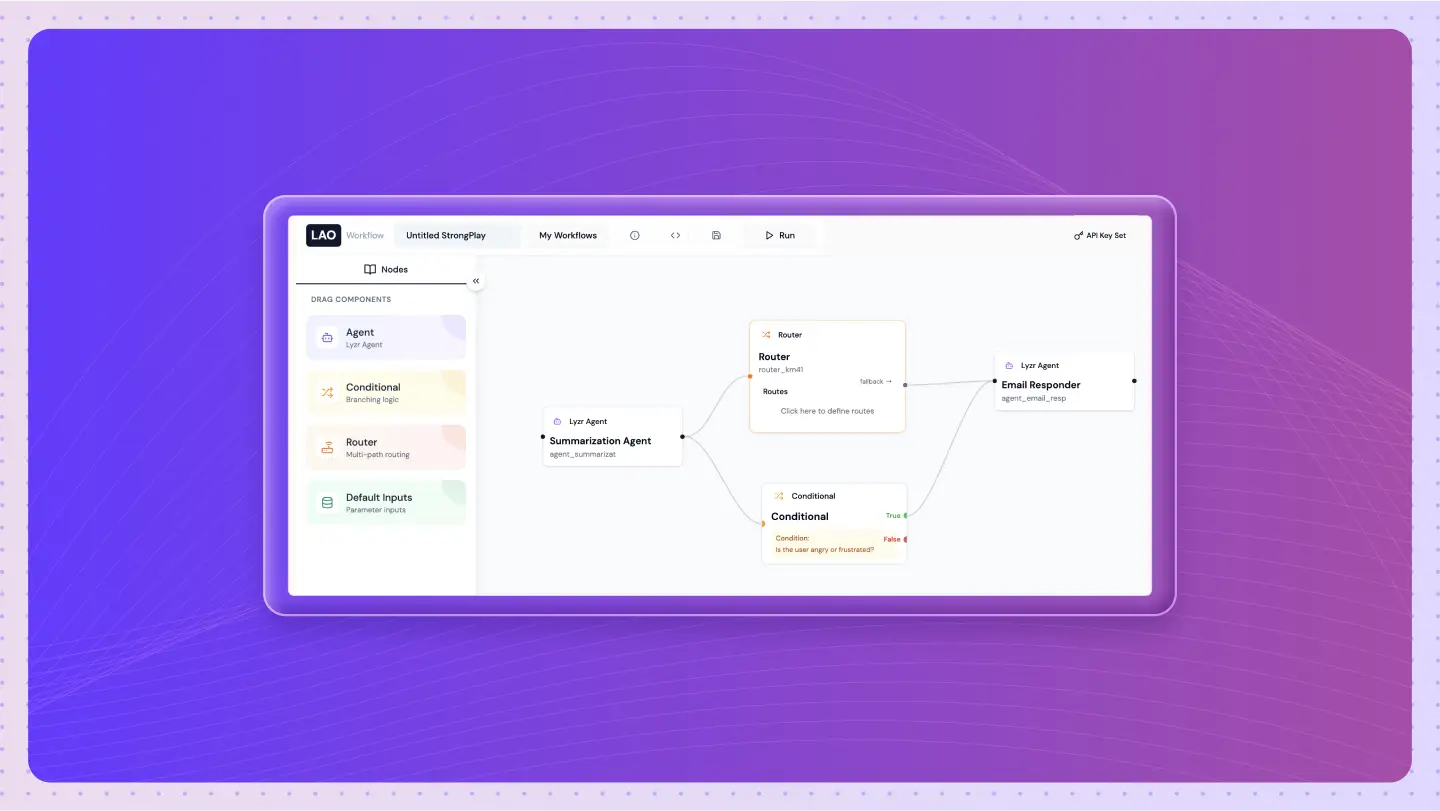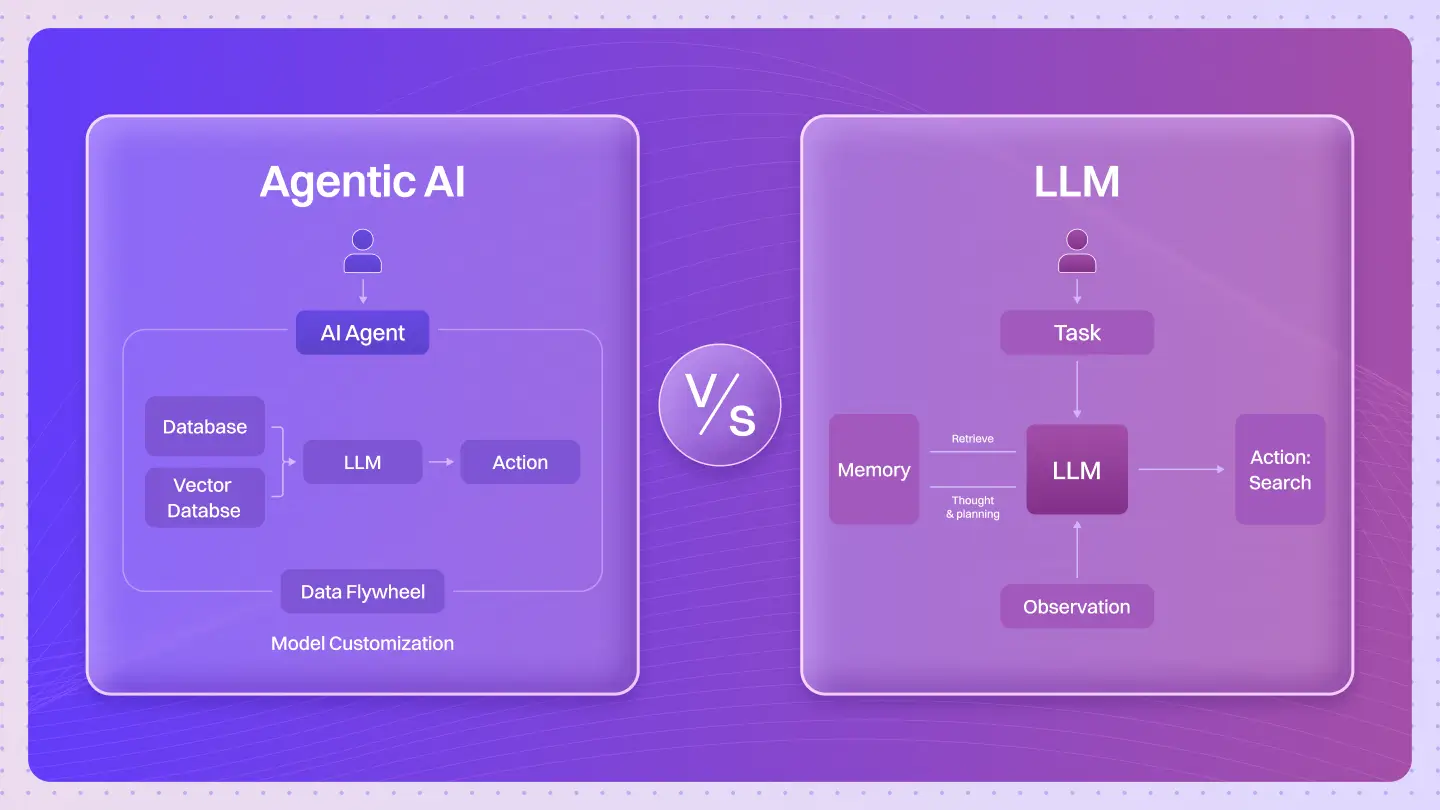Table of Contents
ToggleAlthough generative AI still feels fresh and innovative, we’re already nearing the two-year anniversary of ChatGPT’s launch. It’s clear that we’ve firmly entered the GenAI era. Yet, as time passes, some may question whether GenAI has truly delivered on its immense promise and if not, why.
There’s no doubt that GenAI is capable of remarkable things, but it often falls short when applied to many enterprise-level use cases. Current GenAI workflows face limitations that hinder their scalability and adaptability.
Enter agentic AI a new class of AI designed to complement GenAI and elevate its workflows to the next stage of AI evolution.
While the concept of intelligent agents has existed for decades, the combination of advanced GenAI algorithms and agent technologies is now addressing real business challenges.
Similar to how many providers, including cloud platforms and Model-as-a-Service solutions, offer AI models for fine-tuning or retrieval-augmented generation (RAG), we’re now witnessing the rise of agentic AI blueprints. These templates or workflows are designed to automate complex tasks such as flight booking, customer service, and virtual screening in drug discovery.
Let’s dive in and explore everything about agentic AI.
The Three Waves Of AI: The Rise of Agentic AI
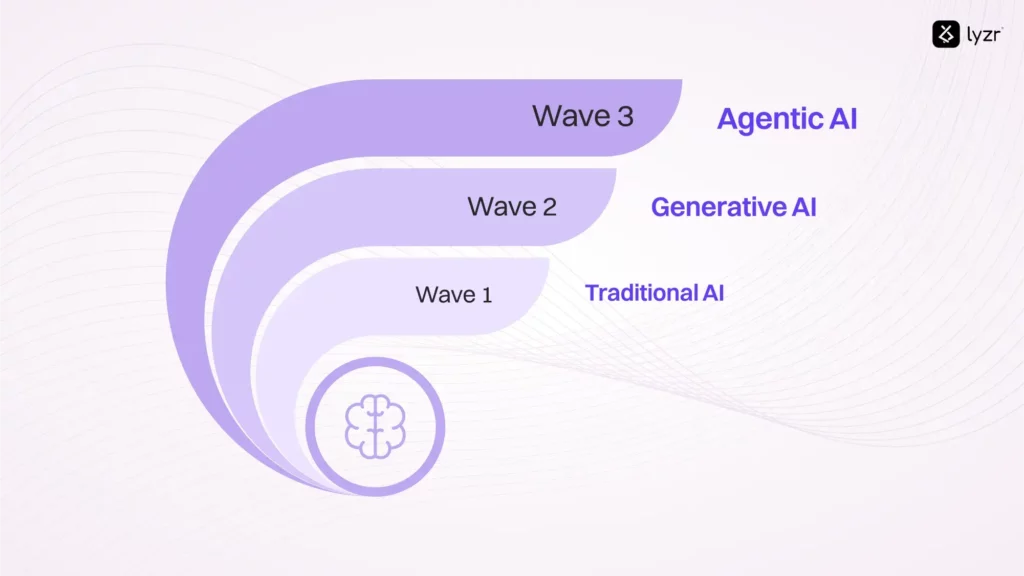
What was the first wave of AI?
- Neural networks: Systems of interconnected nodes (neurons) that learn from data.
- Able to analyze large datasets (hundreds/thousands of values) and detect patterns.
- Required data lakes to store models and training sets, plus GPUs for faster computation.
What did the second wave bring?
- Generative AI: AI that creates new content (e.g., answering questions, summarizing documents, holding conversations).
- This leap allowed AI to generate fresh ideas, not just predict or classify data.
Now, what’s the third wave?
- The third wave of artificial intelligence, known as Agentic AI, can plan, take action, and adjust based on outcomes.
- Unlike previous waves, it can revise its plans if things don’t go as expected.
Understanding what is Agentic AI?
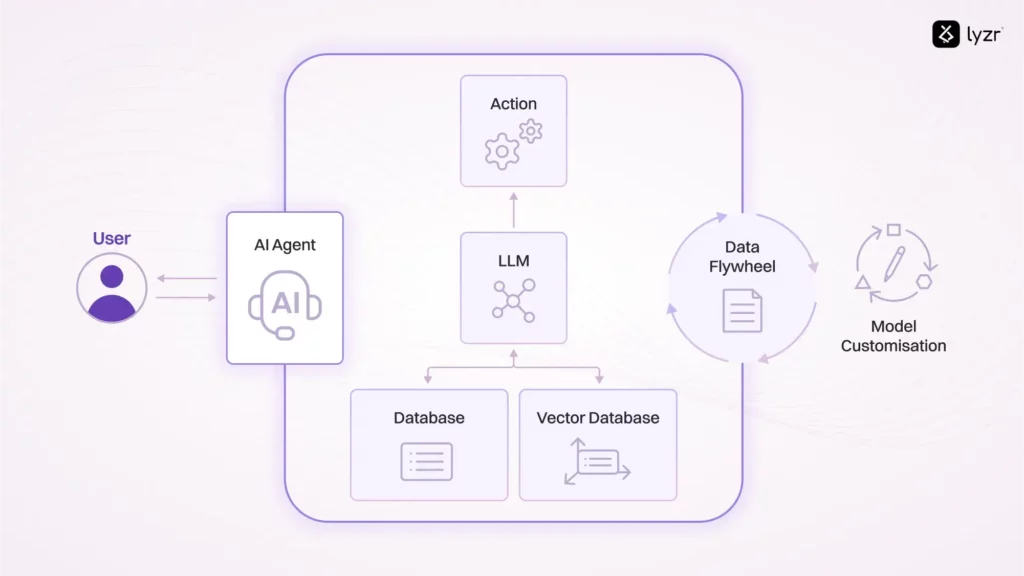
Agentic AI is what gives AI agents the ability to work independently without constant human oversight. It acts as a platform where AI agents and humans can collaborate smoothly.
The rise of agentic AI systems is a result of advancements in machine learning and computational power, allowing these systems to learn from extensive data and adapt to varied situations.
With a set of tools and services, this platform helps agents learn, adapt, and tackle complex tasks quickly, showcasing advanced AI capabilities.
The focus is on enabling agents to make decisions, adjust to new situations, set goals, and reason on their own.
Here are three key features that make Agentic AI stand out:
- Autonomy: These agents can handle tasks on their own, without needing you to step in and direct them every time.
- Adaptability: They’re always learning. By interacting and getting feedback, they adjust their decisions to get better results over time.
- Goal Orientation: When it comes to tasks, they don’t just follow instructions they figure out the best way to achieve the end goal.
And How Does Agentic AI Work?
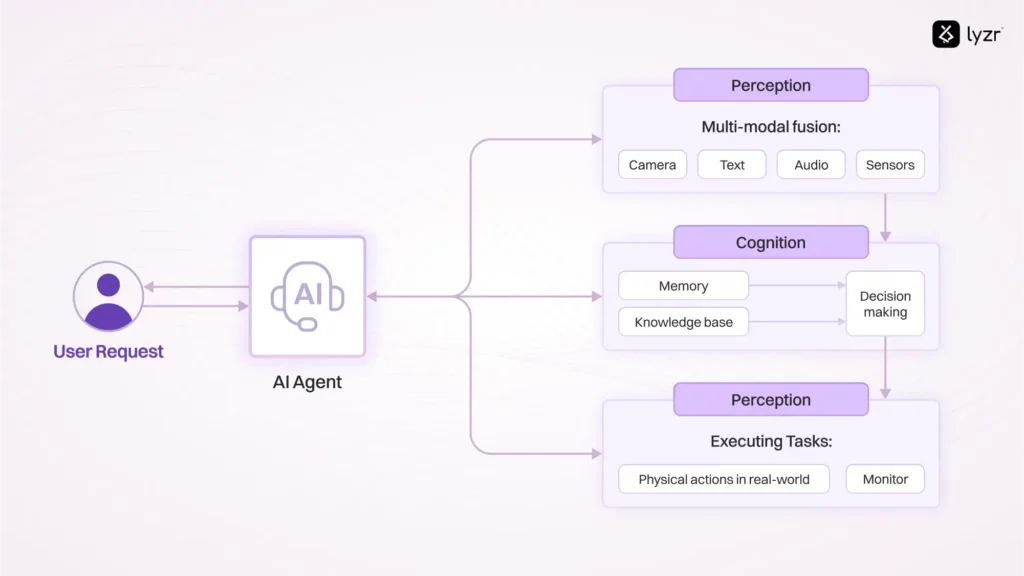
Agentic AI operates through four stages: Perceive, Reason, Act, and Learn, effectively managing complex tasks and showcasing its decision-making and problem-solving abilities.
Solves problems in four simple steps:
1: Perceive: First, AI agents collect data from all sorts of sources like sensors, databases, and digital interfaces. They sift through this information to recognize important details, like objects or key entities.
2: Reason: Next, a large language model takes charge, understanding the task at hand and figuring out the best solution. It also coordinates specialized models for specific tasks, like creating content or making recommendations, using advanced methods like retrieval-augmented generation (RAG) to tap into proprietary data for spot-on results.
3: Act: Once the plan is set, AI takes action. It integrates with tools and software to carry out tasks quickly and efficiently. Built-in guardrails help ensure everything’s done correctly. For instance, a customer service AI might process claims under a certain amount, but anything higher gets flagged for human approval.
4: Learn: Finally, the system gets smarter over time. Through a continuous feedback loop, the data from its actions feeds back into the system, helping it improve and adapt for even better decision-making and efficiency.
Key features of Agentic AI
1. Chaining: Agentic AI systems can break down complex tasks into smaller, manageable steps, allowing them to handle requests that would be too complicated for traditional AI.
This “chain of logic” is how AI agents make decisions and carry out plans to achieve their goals.
For example, if you ask an AI agent to plan a trip to Paris, it would break the task down into steps like:
- Figure out travel dates and budget
- Search for flights and compare prices
- Book the best flight
- Find and reserve accommodation within the budget
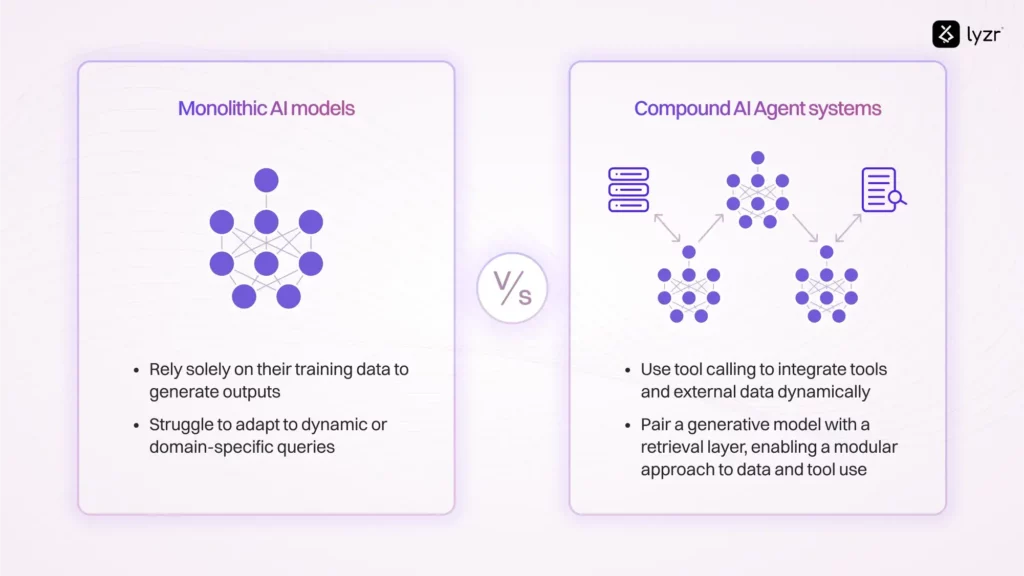
2. Tool Calling: Agentic AI doesn’t just rely on a single, static model like traditional AI. Instead, it can connect to various tools and data sources to get the job done. This allows it to pull in real-time information to solve more complex problems.
For instance, if tasked with troubleshooting a technical issue, an agentic AI could:
- Query the company’s database for service history and device logs
- Pull in real-time diagnostics using an API
- Analyze the data to find the cause and suggest solutions
3. Memory: Agentic AI can remember past interactions, allowing it to offer a more personalized experience. It stores key data in memory, which helps it adjust its approach based on previous experiences.
For example, an AI on an eCommerce site might track customer behavior, preferences, and past purchases. It can then use this information to provide personalized recommendations or offer discounts, like sending a coupon for abandoned carts. As it interacts with customers, it learns and updates its memory to improve over time.
This means Agentic AI continuously gets smarter, adapting its approach and improving its ability to meet your needs.
What are the applications of Agentic AI across different industries?
Agentic AI for Automated Code Writing A mid-sized U.S. insurance company, specializing in automobiles and homes, often struggles with the time-consuming and error-prone task of updating codebases to match new versions of programming frameworks. This slows down the deployment of new features.
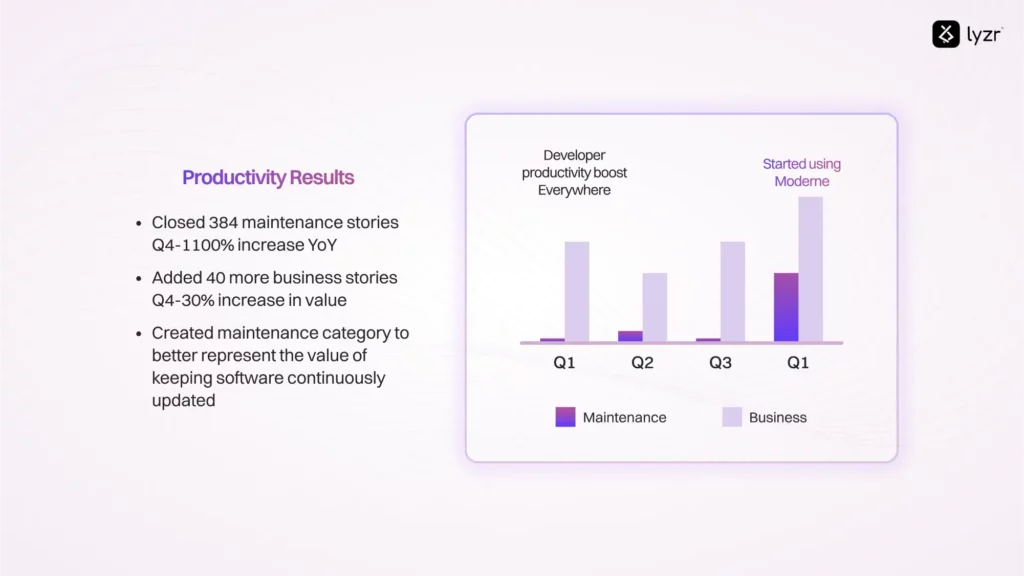
By automating code maintenance and migration using the Moderne platform, developers can eliminate repetitive tasks, leading to faster, more reliable updates. By automating code maintenance and migration, developers can focus on addressing more complex challenges, leading to faster, more reliable updates. This boosts productivity, improves code quality, and reduces both costs and effort. The results show a noticeable increase in developer productivity, especially for maintenance and business tasks.
Agentic AI for Automated Code Testing: Nagra DTV, a global content provider and digital TV operator, improved its code testing efficiency by adopting Testsigma’s AI-driven, cloud-based platform. Switching from an in-house automation system, Nagra DTV integrated Testsigma’s AI-driven platform with their existing enterprise systems, gaining several key benefits:
- More test cases per day
- Better compatibility and scalability across platforms
- Faster debugging and improved code reusability
With this shift, Nagra DTV now executes test cases four times faster, shortening the test cycle by around 25%, improving both efficiency and turnaround time.
Agentic AI in the Insurance Industry: In the insurance sector, AI is becoming a key assistant in various processes. AI-powered systems are automating claims processing, offering personalized policy recommendations, detecting fraud, and enhancing customer service with chatbots.
The insurance sector is implementing agentic AI to automate claims processing, offer personalized policy recommendations, and enhance customer service with chatbots.
One leading Dutch insurance company demonstrated significant improvements through AI. With a well-structured workflow that automates intake, classification, assessment, and decision-making, the company automated 91% of eligible motor claims.
This automation cut average processing times by 46% and boosted customer satisfaction by 9% as measured by Net Promoter Score (NPS).
Agentic AI as Human Resources Assistant
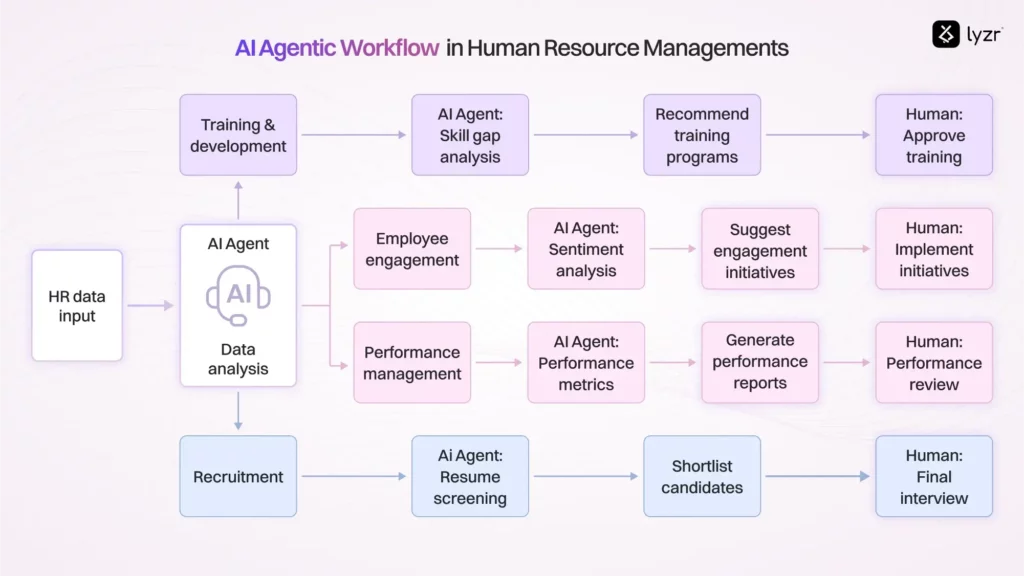
HR professionals can streamline repetitive tasks with Agentic AI, allowing them to focus on more strategic work. Tasks such as initial candidate screenings, recruitment, employee relations, and training can be automated.
PepsiCo optimized its recruitment process by integrating the “Hired Score” AI tool. The tool scans applicant profiles across multiple systems, creating a tailored list of suitable candidates for each position. This automation enhances decision-making, reduces time spent on recruitment, and improves the efficiency of hiring managers.
Agentic AI in Retail and E-Commerce
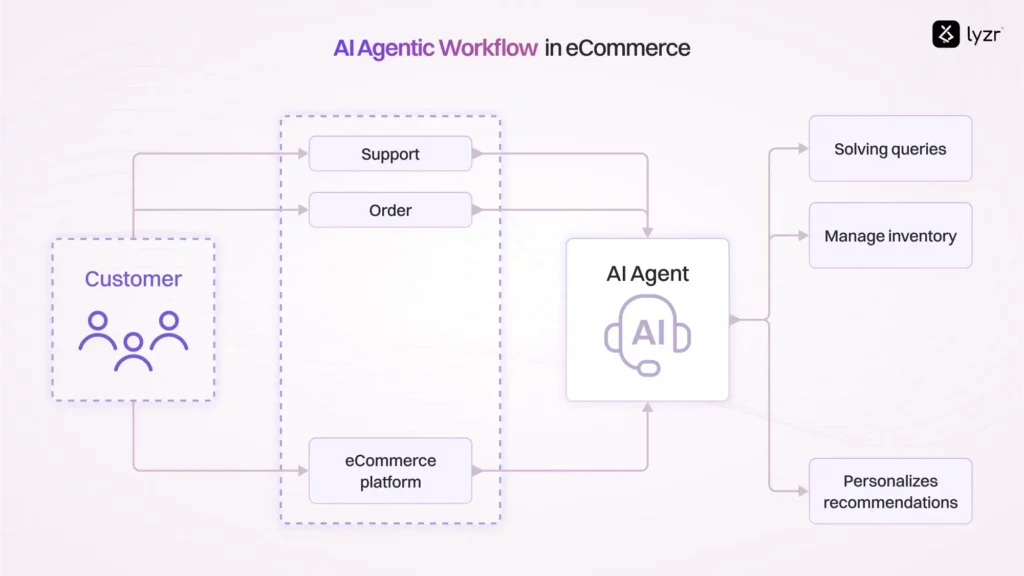
ZARA, a leading fast fashion retailer, uses Agentic AI to drive operational innovation and increase value across various areas of the business:
- Supply Chain Management: AI analyzes data to forecast demand accurately, reducing overproduction
- Inventory Management: Real-time AI predicts popular products, minimizing waste and keeping stock levels aligned with customer preferences
- Customer Engagement: AI provides personalized recommendations and targeted marketing based on individual preferences.
Top Agentic AI platforms
Now that you know that what are the key applications of agentic ai, let us get into the nitty-gritty of which platforms you need to perform specific tasks:
1. Lyzr Studio: Build Modular and Role-Based AI Agents
Lyzr Studio provides a modular framework for developing role-specific agents powered by large language models (LLMs). It allows developers to create agents for live conversations or multi-step task automation.
Key features:
1. Agentic AI at its Core: Create and deploy AI agents that think, adapt, and scale effortlessly to meet your business demands.
2. HybridFlow Precision: Blend the power of LLMs and ML models to deliver intelligent, accurate, and dependable outputs.
3. Secure and Responsible AI: Built with security and fairness at the forefront, ensuring ethical AI practices and compliance.
4. Customization: Easily customize workflows and design agents tailored to your business needs—no advanced coding required.
2. Vertex AI Agent Builder
Vertex is one of the best AI agent builders for integrating machine learning into AI agents, offering enterprises a seamless way to enhance operations with advanced AI. Developed by Google Cloud, Vertex AI provides a comprehensive suite of tools for building, training, and deploying AI models.
3. AgentForce
AgentForce, developed by Salesforce, is a suite of autonomous AI agents designed to automate complex workflows across sales, marketing, and service. These agents operate independently, analyzing data and executing tasks seamlessly within the Salesforce ecosystem.
4. AgentGPT
AgentGPT is an open-source AI platform for building and deploying autonomous agents capable of breaking down goals into smaller tasks. It excels in research, problem-solving, and task automation, making it versatile for diverse applications.
5. Microsoft Copilot Studio
Microsoft Copilot Studio is a robust no-code AI agent builder designed for creating AI-driven chatbots. As part of the Microsoft Power Platform, it integrates easily with other Microsoft services, making it an excellent choice for businesses leveraging the Microsoft ecosystem.
The Future of Agentic AI Beyond 2025
Agentic AI represents a significant opportunity for enterprises to drive value. However, the marketing of AI tools often leans on buzzwords, creating confusion in the marketplace.
For example, the AI powering social media news feeds has long been deterministic, yet it is frequently misrepresented as generative or agentic AI. As AI models become vital components of internal infrastructure, businesses must critically evaluate these tools to understand their core functionality and relevance to specific challenges.
Generative AI has highlighted a gap between terminology aimed at shareholders and its practical value for customers. While companies may emphasize “generative AI” to enhance their market position, the tangible benefits for end-users often fall short of expectations shaped by such claims.
The data is telling: most enterprises lack clear metrics or performance indicators for generative AI initiatives.
Only 11% of organizations are developing custom generative AI solutions, with 89% relying on prebuilt or publicly available tools, according to a global C-suite survey by Publicis Sapient.
In 2025, enterprises should temper their expectations regarding agentic AI, as the internal deployment of these tools may involve significant lead times. Interestingly, the implementation of AI itself is often the easiest step. However, ensuring its effective functionality requires extensive work to align it with legacy systems. This includes addressing data security, governance challenges, and years of accumulated technical debt.
Organizations must prepare for the complexity of this process, which involves rigorous planning, numerous discussions, and substantial development efforts to ensure seamless integration and reliability.
Experience Agentic AI that’s built to tackle complex challenges

Well since agentic workflows are the future, if youre looking to explore agents & are looking to automate workflows, come speak to us at Lyzr.
We are happy to walk you through what is possible. And similarly if you’re looking to build on your own, do explore our pre-built agents on Lyzr Studio. We have quite a few for banking, sales, marketing, customer support and more.
Q1. What is mean by Agentic AI?
Agentic AI means AI that can act independently, adapt to new information, and pursue goals without constant human input.
Q2. What are the key features of Agentic AI?
The main features are autonomy, adaptability, goal orientation, tool calling, chaining, and memory.
Q3. Which is the best Agentic AI platform?
Popular agentic AI service providers include Lyzr Studio, Vertex AI, AgentForce by Salesforce, AgentGPT, and Microsoft Copilot Studio
Book A Demo: Click Here
Join our Slack: Click Here
Link to our GitHub: Click Here



